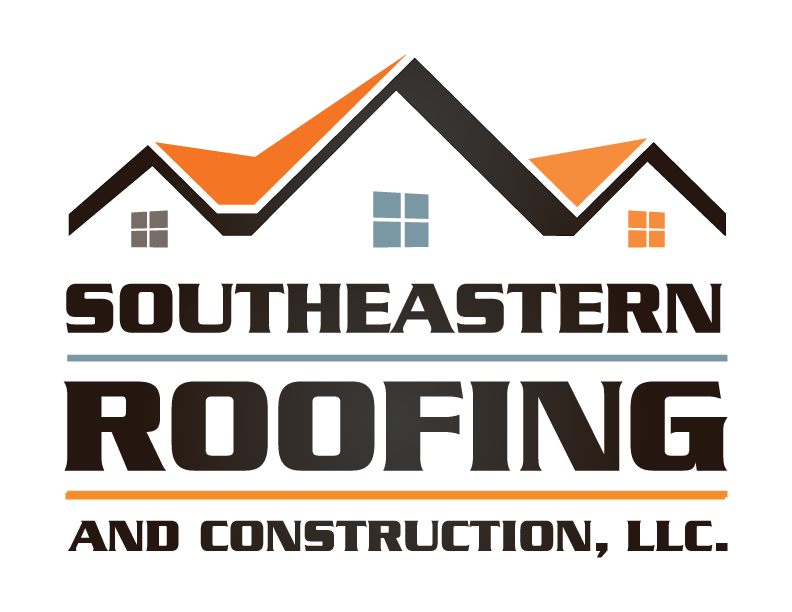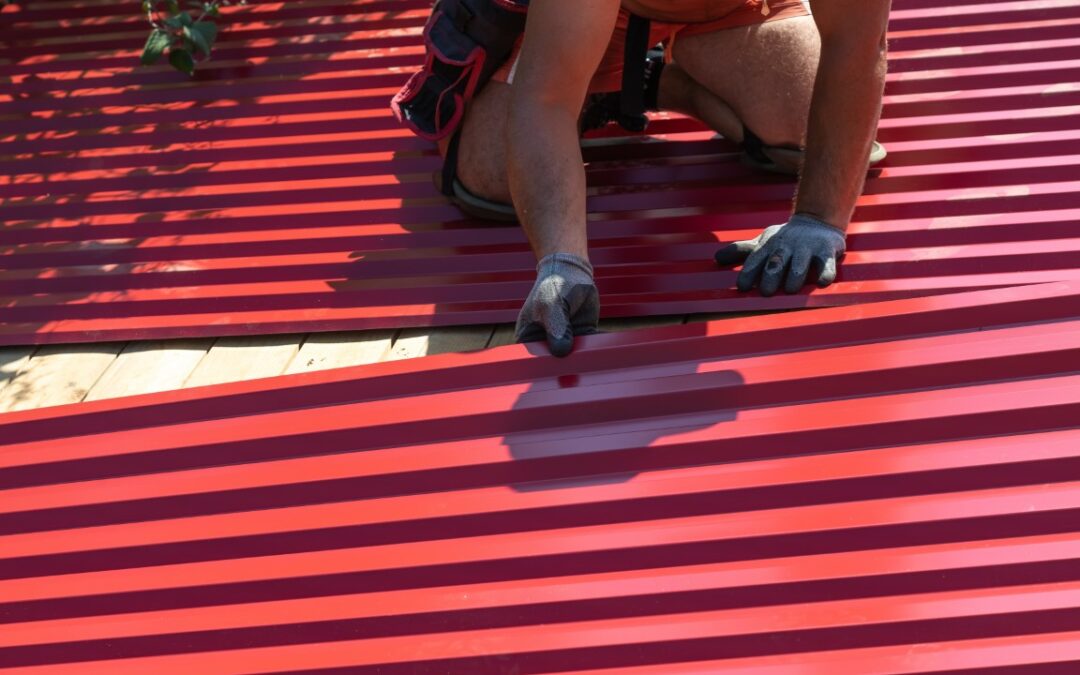In our journey through the world of roofing, we’ve witnessed the powerful forces of nature that can cut short a roof’s lifespan. From heavy rain pounding relentlessly on shingles to hailstones leaving their mark, extreme weather conditions take their toll.
Snow and ice build-up, high winds, and scorching temperatures all contribute to the wear and tear. Like a battle-weary soldier, a roof faces the constant onslaught of UV radiation, storm debris, and severe thunderstorms.
Let’s delve into how these elements conspire to shorten the life of our steadfast protector above our heads.
Key Takeaways
- Extreme weather conditions such as heavy rain, hailstorms, snow and ice buildup, and high winds can significantly shorten the lifespan of a roof.
- Exposure to extreme temperatures, UV radiation, storm debris, and severe thunderstorms can also contribute to roof damage and decrease its longevity.
- Promptly addressing roof leaks and regularly maintaining the roof is crucial for preventing further damage and ensuring its longevity.
- Taking preventative measures such as using wind-resistant materials, regularly inspecting the roof, and providing additional support can help mitigate the effects of high winds and other extreme weather conditions on the roof’s lifespan.
Heavy Rain
Heavy rain can significantly decrease the lifespan of a roof. When heavy rain occurs, it can lead to roof leaks and water damage, which can have detrimental effects on the overall integrity of the roof.
Roof leaks can occur due to various factors such as deteriorated shingles, clogged gutters, or improper installation. Once water penetrates the roof, it can seep into the underlying structures, causing damage to the attic, insulation, and even the interior of the building. Over time, this water damage can weaken the roof’s structure, leading to sagging, rotting, or even collapsing.
It’s crucial to address roof leaks promptly to prevent further damage and extend the lifespan of the roof. Regular maintenance, including inspecting and repairing any damage, is essential in ensuring the roof’s longevity and protecting the building from water-related issues.
Hail Damage
When hailstorms occur, they can cause significant damage to the roof, shortening its lifespan. Hailstones, ranging in size from small pea-sized pellets to large golf balls, can impact the roof with tremendous force, leading to dents, cracks, and even punctures. These damages compromise the roof’s structural integrity and expose it to further deterioration.
In such cases, prompt roof repair is essential to prevent water leakage and subsequent mold growth inside the building. However, the cost of repairing hail damage can be substantial. Fortunately, many insurance policies provide coverage for hail damage, easing the financial burden on homeowners.
It’s crucial to review your insurance policy carefully to understand the extent of coverage and any specific requirements for filing a claim related to hail damage.
Snow and Ice Buildup
We often underestimate the impact that snow and ice buildup can have on our roofs. Snow and ice accumulation can lead to significant damage and even roof collapse if not properly managed.
The weight of the snow and ice can put excessive pressure on the roof structure, causing it to weaken over time. This can result in structural failure and potential injury or loss of life.
Additionally, as the snow and ice melt, water can seep into the roof and cause water leakage, leading to further damage such as rotting of the wood and the growth of mold and mildew.
It’s crucial to regularly remove snow and ice from the roof to prevent these issues and ensure the longevity of the roof.
High Winds
High winds can have a significant impact on the lifespan of a roof. In addition to causing immediate damage, such as lifting and tearing off shingles, high winds can also weaken the overall structural integrity of the roof.
This can lead to further issues, such as leaks and water damage, which can greatly reduce the longevity of the roof.
It’s important to take preventative measures, such as installing wind-resistant materials and regularly inspecting and maintaining the roof, to mitigate the effects of high winds and ensure the roof’s longevity.
Roof Damage Prevention
Implementing proper measures to mitigate wind damage is crucial for extending the lifespan of roofs in extreme weather conditions. Roof maintenance and weatherproofing techniques play a vital role in preventing roof damage caused by high winds.
Regular roof inspections are essential to identify any weak spots or potential vulnerabilities that may be susceptible to wind damage. It’s important to ensure that all roof components, such as shingles, flashing, and gutters, are properly installed and maintained.
Reinforcing the roof structure with additional bracing or fasteners can provide added protection against strong winds. Additionally, using wind-resistant materials, such as impact-resistant shingles or metal roofing, can further enhance the durability of the roof.
Impact on Longevity
One factor that significantly reduces the lifespan of roofs in extreme weather conditions is the impact of high winds. High winds can have a detrimental effect on the durability of a roof and the overall structure of a building. When powerful gusts of wind occur, they exert a tremendous force on the roof, causing it to shake and flex. This constant movement puts stress on the roofing materials and weakens their integrity over time. As a result, the roof becomes more susceptible to damage and leaks.
Additionally, the effects of high winds can extend beyond the roof itself. The strong gusts can also impact the building’s structure, causing it to shift or even collapse in severe cases. Therefore, it’s essential to take into account the impact of high winds when considering the longevity of a roof and the overall stability of a building.
In the subsequent section, we’ll explore another factor that affects the lifespan of roofs in extreme weather conditions: extreme temperatures.
Extreme Temperatures
Extreme temperatures can have a significant impact on the lifespan of a roof. Roof materials are vulnerable to extreme heat and cold, which can cause them to degrade and deteriorate more quickly. These temperature fluctuations can also impact the structural integrity of the roof, leading to potential leaks and damage.
Regular maintenance and inspections are crucial to identify and address any issues caused by extreme temperatures, ensuring the longevity of the roof.
Roof Material Vulnerability
To properly address the issue of roof material vulnerability to extreme temperatures, we must first understand the potential impacts on its lifespan.
Roof materials are subject to expansion and contraction due to extreme temperatures, which can lead to cracks, warping, and overall deterioration. These vulnerabilities can significantly reduce the lifespan of a roof if not properly addressed.
Regular roof maintenance is essential to ensure the longevity of the materials. Weather resistance is a crucial factor in determining the vulnerability of roof materials to extreme temperatures.
Materials that are more resistant to temperature fluctuations, such as metal and certain types of synthetic materials, tend to have a longer lifespan. On the other hand, materials like asphalt shingles may be more susceptible to damage in extreme temperatures.
Understanding the vulnerability of different roof materials to extreme temperatures is essential for homeowners and building owners to make informed decisions about their roofing options.
Impact on Structural Integrity
Continuing from our previous discussion on roof material vulnerability, extreme temperatures have a significant impact on the structural integrity of roofs.
In regions with extreme temperatures, such as excessively hot or cold climates, roofs are subjected to constant thermal stress. This stress can lead to structural weakening, making the roof more susceptible to damage and failure. High temperatures can cause the roof materials to expand, while low temperatures can cause them to contract. These continuous expansions and contractions put immense strain on the roof structure, leading to cracks, warping, and eventual failure.
Additionally, extreme temperatures can also result in moisture penetration. When the roof materials expand and contract, gaps and cracks can form, allowing water to seep in. This moisture can further weaken the structure, causing rot, mold, and other forms of damage.
Therefore, it’s crucial to take into account the impact of extreme temperatures on roof structural integrity to ensure the longevity and durability of roofs in such conditions.
Need for Regular Maintenance
To ensure the longevity and durability of our roofs in extreme temperatures, we must prioritize regular maintenance.
This includes the importance of professional inspections and the role of proper drainage systems.
Professional inspections play a crucial role in identifying potential issues that may arise due to extreme temperatures. These inspections are carried out by experts who have the knowledge and experience to spot any signs of damage or weakness in the roof.
By identifying and addressing these issues early on, we can prevent further damage and extend the lifespan of our roofs.
Additionally, proper drainage systems are essential in extreme temperatures. They help to divert water away from the roof, preventing pooling and potential water damage.
Regular maintenance, including professional inspections and proper drainage systems, is vital for the longevity and durability of our roofs in extreme temperatures.
UV Radiation Exposure
One factor that significantly affects the lifespan of roofs is exposure to UV radiation. UV radiation, which comes from the sun, can cause significant damage to roofs over time. Without proper UV protection, roofs are susceptible to degradation and premature aging.
UV radiation breaks down the chemical bonds within roofing materials, leading to discoloration, cracking, and deterioration. Regular roof maintenance, including the application of UV protective coatings, can help mitigate the effects of UV radiation. These coatings act as a barrier, reflecting and absorbing the majority of UV rays, reducing the impact on the roofing materials.
It’s important to regularly inspect roofs for signs of UV damage and promptly address any issues to extend the lifespan of the roof. By implementing proper roof maintenance and UV protection measures, homeowners can ensure their roofs remain durable and long-lasting.
Storm Debris Impact
Our roofs can sustain significant damage and have their lifespan shortened by the impact of storm debris. When severe weather events such as hurricanes, tornadoes, or even strong thunderstorms occur, they can generate high winds that can propel various objects into the air.
These objects, such as tree branches, loose building materials, or even entire structures, can collide with our roofs, causing dents, punctures, or even destruction. The impact of storm debris can lead to leaks, compromised structural integrity, and the need for extensive roof repairs.
Depending on the severity of the damage, the costs of roof repairs can quickly add up, especially if insurance coverage is limited or insufficient. Therefore, it’s crucial to understand how storm debris impact can affect the lifespan of our roofs and take appropriate measures to protect and maintain them.
In the following section, we’ll explore the damages caused by severe thunderstorms and their implications for roof longevity.
Severe Thunderstorms
When severe thunderstorms occur, they can cause significant damage to roofs, shortening their lifespan. These powerful storms bring intense winds, heavy rain, and hail, all of which can wreak havoc on the structural integrity of a roof.
The impact of severe thunderstorms on property value can be substantial. A damaged roof can decrease the overall value of a property, making it less attractive to potential buyers.
Additionally, insurance coverage plays a crucial role in mitigating the financial burden of roof repairs or replacement. Homeowners need to review their insurance policies and ensure they’ve adequate coverage for severe weather events.
Conclusion
In conclusion, extreme weather conditions can significantly shorten the lifespan of roofs.
One alarming statistic reveals that hail damage alone accounts for an estimated 1.7 billion dollars in roof repairs each year in the United States.
Homeowners must understand the impact of these weather events and take proactive measures to protect their roofs from such damage.
Regular maintenance, quality materials, and professional inspections can help extend the lifespan of roofs and safeguard homes from the costly consequences of extreme weather.

